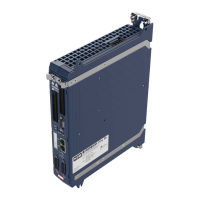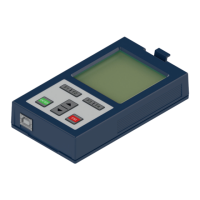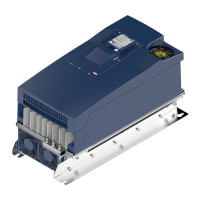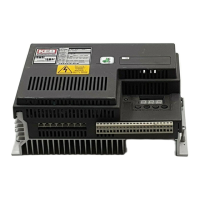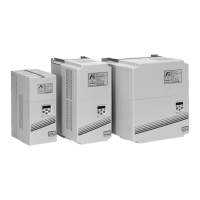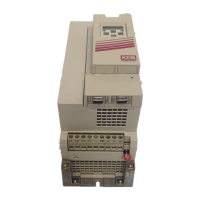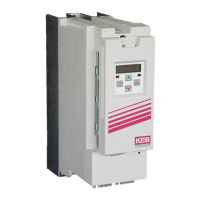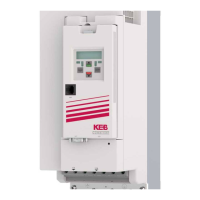6.2.18.5 EMF Identification
The counter voltage EMF (dr14) of the motor can only be determined if the motor
can rotate freely.
Identification is also possible with a load torque as long as the rump-up to identifi-
cation speed dr44 is possible with this torque.
When identifying the EMF with load, however, the determined EMF can no longer
be used to define the saturation characteristic.
The speed setpoint is determined via dr44 (default value 65% of the rated speed).
The ramps are determined in co48…co60. Too slow ramps can make the ramp-up
difficult in unidentified state. If error message 61 "Emf / Lh, speed <> ref" (= identifi-
cation speed not reached) is displayed in dr57 ident error info, the acceleration
should be increased or the speed controller setting should be adjusted.
A start value for the EMF of the motor data is calculated with the selection mode =
1 or 2 in dr54 (after writing on dr99).
Then the EMF is real identified with mode = 1 in dr54.
Calculation of the start value:
Parameter dr14 has only influence on the torque calculation when the saturation
characteristic mo00 saturation mode is activated or the source in source in ds11
torque mode is set to 16 = EMF.
6.2.18.6 SM inductance
The inductance of the synchronous motor can be determined over two procedures.
If value 32 = "auto select“ is selected in dr54 at SM ind. mode for all ident, the "five
step“ procedure is executed first. If this determines a time constant < 10ms, the re-
sult is considered as insufficient reliable and the inductance is identified according
to the "amplitude modulation" procedure. The inductance of the asynchronous mo-
tor is always performed by the amplitude modulation procedure.
a) "five step“ – procedure (dr54 = 4)
Five different voltage vectors are given to the motor within a view ms. The current
level to be reached can be preset via parameter dd02.
The default value of 100% can be kept for the determination of the inductance. The
voltage rate is determined by test jumps.
b) "Amplitude modulation“ procedure (dr54 = 7)
Here a test sinus signal is given to the motor.
The test frequency starts with 500 Hz (125 Hz for asynchronous motor). If the cur-
rent level for the identification (selectable in dr56) should not be reached with this
frequency, it is reduced by half. Significant noise development is to be expected on
some motors due to the test signal. Here the current level dr56 should be reduced
to 20% (e.g.).
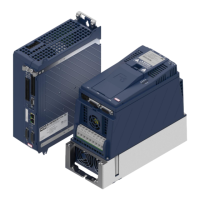
